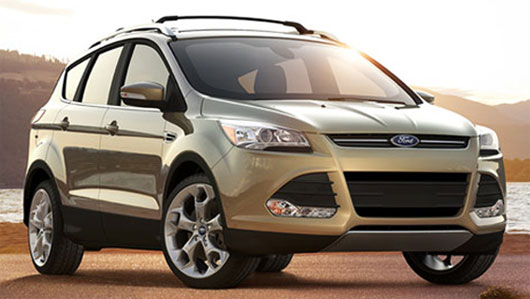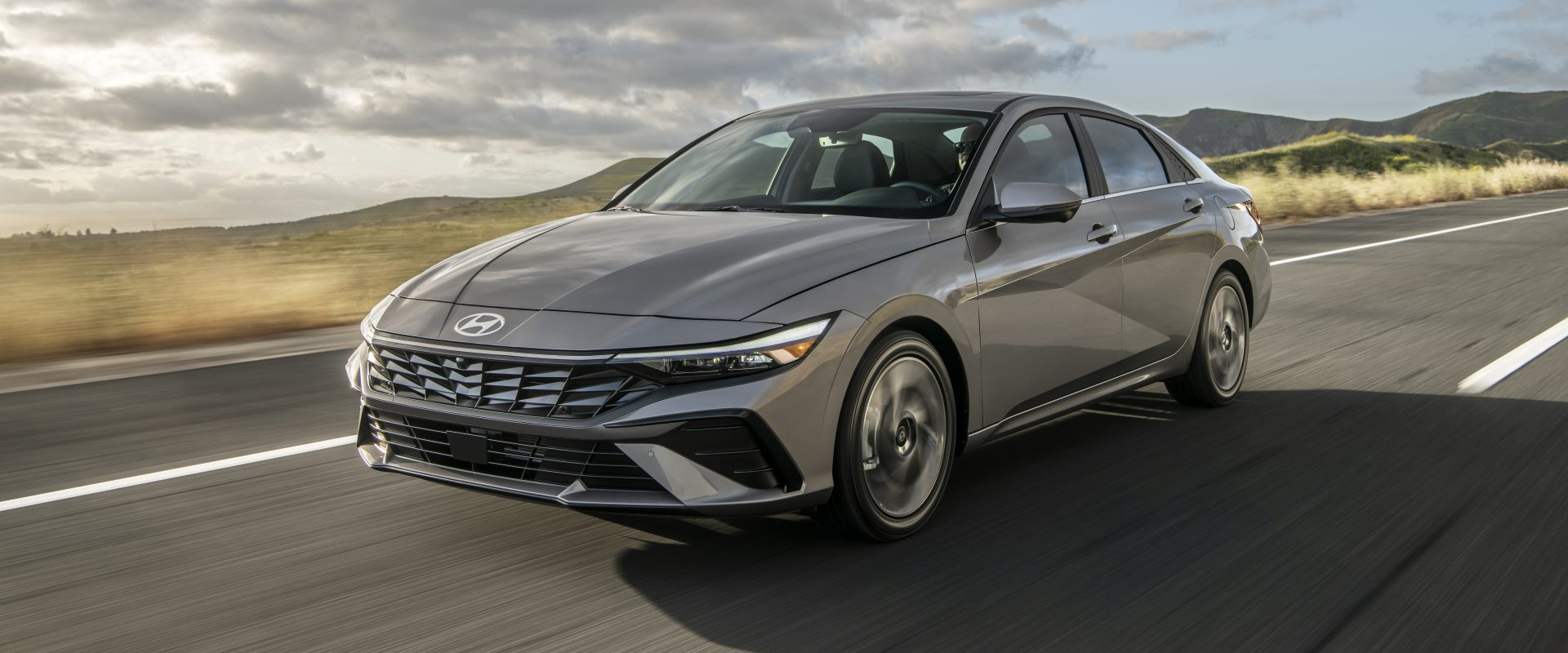2013 Ford Escape
The Ford Escape may not have been the first compact crossover, but it is a best seller with over 2 million hitting the streets over the last 12 years. The Escape’s success is a key reason that smaller crossovers have become one of the industry’s largest marketing segments, and also one of the most competitive. So, what can an all new Ford Escape bring to the party? Well, let’s find out.
The 2013 Ford Escape is a big departure from its former old school boxy styling. This now very dynamic and swoopy looking CUV has far more in common with the Focus compact car than other Ford utilities, which is fitting since it does share the Focus’ C-platform.
This new global design is totally contemporary. It is wider, longer, and lower than its predecessor with a wheelbase stretched to 105.9-inches. That’s more than a Honda CR-V although Escape is slightly shorter overall. 17-inch steel wheels are standard, but 18 and 19-inch alloys are available, as are HID-headlights, a rarity in its class. Fenders are overstated and the sharp lines and aggressive front end give the Escape a look that’s more sporty than utilitarian. It’s all grilles and air intakes up front, with active grille shutters on some models. The rear gets highlighted by large, angular tail lamps with “aero-flashes,” a small hatch-mounted spoiler, and lower cladding with dual exhaust tips. A large, panoramic sunroof is optional.
 Ford continues to please with the overall design, functionality, and fit and finish of their interiors. The Escape’s standard cloth seats are as comfortable as any in the segment. The Ice Blue Gauges are a funky arrangement with big exposed pods and a large, center info screen. SE’s are equipped with Ford SYNC voice activation and a 4-inch color screen mounted high in the center stack. SE Radio controls are as confusing as in the Focus. The SEL adds the updated MyFord Touch with Sony’s soft touch stereo system optional. Step up to Titanium trim and you’ll get premium leather seating and Remote Start, as well as Ford’s new hands-free power lift gate and it works very well provided you have the key in your pocket as you sweep your foot under the rear bumper. Even base models include steering wheel controls for cruise and audio, and a full complement of airbags are standard, including a driver’s knee airbag.
Ford continues to please with the overall design, functionality, and fit and finish of their interiors. The Escape’s standard cloth seats are as comfortable as any in the segment. The Ice Blue Gauges are a funky arrangement with big exposed pods and a large, center info screen. SE’s are equipped with Ford SYNC voice activation and a 4-inch color screen mounted high in the center stack. SE Radio controls are as confusing as in the Focus. The SEL adds the updated MyFord Touch with Sony’s soft touch stereo system optional. Step up to Titanium trim and you’ll get premium leather seating and Remote Start, as well as Ford’s new hands-free power lift gate and it works very well provided you have the key in your pocket as you sweep your foot under the rear bumper. Even base models include steering wheel controls for cruise and audio, and a full complement of airbags are standard, including a driver’s knee airbag.
Rear seat room is good for a compact crossover, and seats are comfortable enough to keep “are we there, yet?” complaints from the little ones at bay. Cargo space also fairs well at 34.3 cubic-feet. The 60/40 seat backs recline for comfort and fold for max cargo of 68.1 cubic-feet. That’s just shy of the CR-V.
We spent most of our time driving the new 1.6-liter EcoBoost I4 and came away very impressed. It’s peppy off the line and there’s plenty of reserve power for merging and passing, though it does require your foot to the floor and a downshift or two. Output is 178-horsepower and 184 pound feet of torque, aided by direct injection and Twin Independent Variable Camshaft Timing. A carryover 168-horsepower 2.5-liter I4 and the Explorer’s 240-horsepower 2-liter EcoBoost are also available, with the later towing 3,500 pounds. Transmissions are all 6-speed automatics with manual shift and regardless of which powertrain you choose, you’ll get 30 miles-per-gallon or better on the highway. A front-drive 1.6-liter EcoBoost has the best Government Fuel Economy Ratings at 23-City and 33-Highway. The highway number beats last year’s Escape Hybrid.
Through the back roads north of San Francisco, California, the Escape felt much more car-like than the previous model. While not exactly nimble, roll is subdued thanks to both front and rear stabilizer bars and the strut front and multi-link rear suspension is more than willing. We also give Ford high praise for an incredibly quiet cabin. The Electric Power Steering feels similar to other Ford products, with good, linear action and on-center feel, while the transmission shifts smoothly.
 The available intelligent all-wheel-drive system can preemptively send up to 100% of torque to the rear wheels. Working in conjunction with Torque Vectoring Control and Curve Control, it helps improve handling on dry pavement, as well as keep you out of trouble on slick roads.
The available intelligent all-wheel-drive system can preemptively send up to 100% of torque to the rear wheels. Working in conjunction with Torque Vectoring Control and Curve Control, it helps improve handling on dry pavement, as well as keep you out of trouble on slick roads.
The 2013 Escape is an excellent overall package. It handles nicely, is fairly comfortable, and gets great fuel mileage; plus you’ve got a wide range of choices when it comes to power-trains. So, you can choose whichever Escape best fits your needs or budget. And, you will have to budget wisely to put an Escape in your garage. While pricing starts at $23,295, it can quickly climb to $31,195 for the fully loaded Titanium. No party is complete without that one guy who always shows up the best dressed, is smarter than everyone else, and just happens to be good at everything as well. The 2013 Ford Escape is that guy. It may just be one of many well executed small crossovers to arrive over the last year, but it’s clearly shot to the front row of the class. And, we think it will stay there a while.
Specifications
- Engine: 1.6-liter EcoBoost I4
- Horsepower: 178
- Torque: 184 lb-ft.
- EPA: 23 mpg city/ 33 mpg highway
2024 Hyundai Elantra
Basic Transportation At Its Best…And That Is A Compliment
For those of you who write in every week bemoaning the fact that all we seem to do around here is test incredibly expensive cars and EVs that only the very well to do can afford, this one’s for you. It’s a commuter and budget friendly mainstay from Hyundai, the compact Elantra sedan. And, it has been nicely updated for 2024.
We clearly do enjoy driving high-performance machines and ultra-luxury rides around here, but like most of you, when it comes time to drive home at the end of a long workday, we do so in something much more practical and affordable, like this 2024 Hyundai Elantra sedan.
If you’re thinking the front end has gotten more aggressive, you’re right. Hyundai calls it a “Shark Nose” theme, and we’re guessing they were thinking more Great White than Hammerhead, though Megamouth shark would also apply. It helps for a low and wide look; more substantial than the typical compact. Other additions for ’24 include slimmer daytime running lights, revised stainless steel Hyundai emblem, reshaped front fenders, sport sedan-style rear diffuser with silver trim; a parametric pattern added to the C-Pillar, and new LED taillights that take up a lot more space on the highly sculpted decklid. Plus, new wheel designs in sizes ranging from 15- to 18-inches.
Standard engine in SE, SEL, and Limited grades is this naturally aspirated 2.0-liter I4 with 147 horsepower and 132 lb-ft of torque. Even with no hybrid assistance, it gets substantial Government Fuel Economy Ratings of 31 City, 40 Highway, and 34 Combined; we averaged a great 38.6 mpg of Regular.
Those high fuel economy numbers mean acceleration times are pretty high as well. It was in no particular hurry to get off the line at our test track, as after a slight jolt of power, it felt pretty sluggish going down the track, taking us a lengthy 9.4 seconds to hit 60 mph. Hyundai’s Intelligent Variable Transmission has some realistic simulated gear shifts built in, and they not only provided the feel of a true automatic, but kept engine noise from becoming overbearing. And while this 2.0-liter may not be a house-on-fire off the line, it has no problem keeping up with traffic, and feels like just the perfect amount of power for a practical and safe commuter car.
There are other engine options too. Two choices if you want to go faster, a 1.6-liter turbo with 201 horsepower in the Elantra N Line, and a 276-horsepower turbocharged 2.0-liter for the Elantra N; plus, one with even better fuel economy, a 1.6-liter hybrid with a 139 horsepower total output.
And despite some significant understeer, there was good feel through the cones of our handling course, both in steering and chassis feedback. We wouldn’t quite call it “point and shoot,” but it responded to inputs fairly quickly, with only moderate body roll. All-in-all, when it comes to performance, it doesn’t claim to bring a whole lot to the table, but does clearly overachieve with what it does bring.
And Hyundai is always overachieving when it comes to packing in features, yet has found a way of keeping things refreshingly simple with a good mix of touchscreen and manual controls. Lots of space too, both up front in the surprisingly wide front buckets, and in the rear bench with ample room for three. Updates for all Elantra interiors include softer materials on the door panels, upgraded instrumentation and additional charging ports, plus a surround view monitor and new H-Tex simulated leather for Limited trim.
Elantra pricing starts with an SE at $22,775, the SEL comes in at $24,725, Limited begins at $28,215, and the sporty N Line starts at $29,615. If you’re interested in the hybrid, base Blue starts at $27,400 with Limited at $30,600.
Some might say there’s not a whole lot that’s earth shaking about the 2024 Hyundai Elantra, but that’s mostly why we like it so much. When it comes to just delivering good, basic transportation with a high dose of unexpected amenities, Hyundai delivers once again.
Specifications
- Engine: 2.0-liter I4
- Horsepower: 147
- 0-60 mph: 9.4 seconds
- 60-0 Braking: 111 ft (avg)
- MW Fuel Economy: 38.6 MPG (Regular)
- Transmission: IVT
- Torque: 132 lb-ft
- 1/4 Mile: N/A (Track Maintenance)
- EPA: 31 City / 40 Highway / 34 Combined







